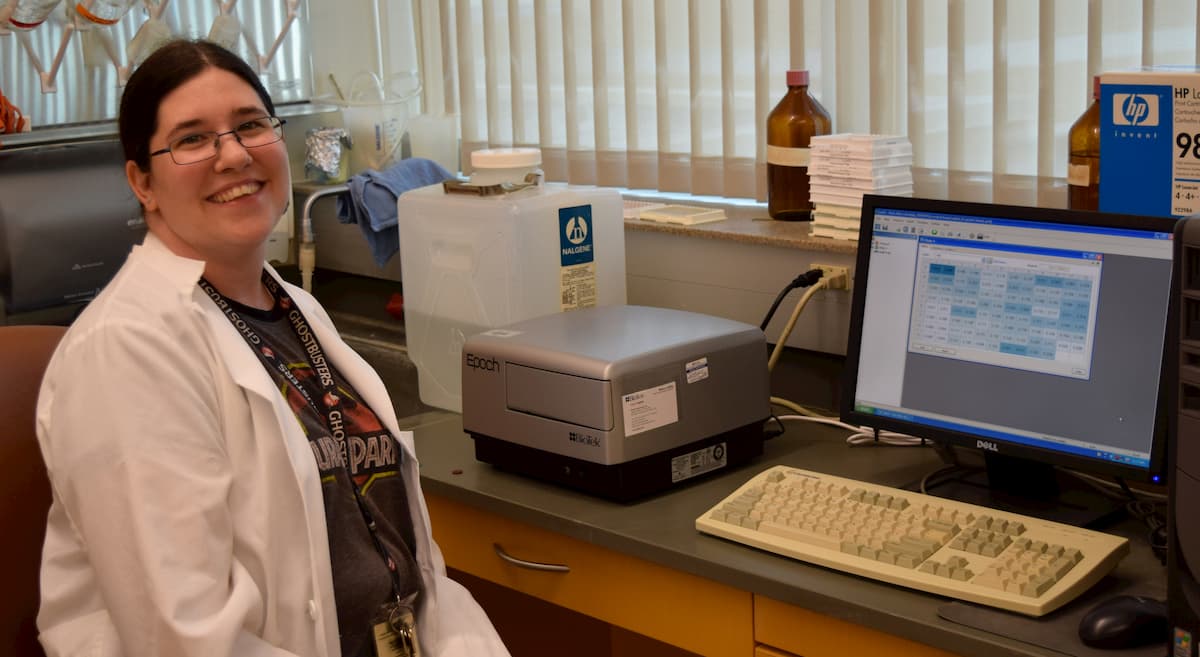RIA and Elisa
- Department of Physiology
- About Physiology and Biophysics
-
Education
- Melissa and Pete Shepherd, Jr., PhD New Investigator Prize
- Physiology and Biophysics Educational Programs Home
- Graduate Program
- Undergraduate Research Experience
- Seminar and Lecture Series
- Seminar Series Archives
-
Research
- 2025 Publications
- Physiology and Biophysics Research Home
- Core Facilities
- Programs
- Graduate Program Research
- Publications
- Research Links
- Resources
Main Content
Sample Submission
 The following are procedures for submitting samples for radioimmunoassays and ELISA:
The following are procedures for submitting samples for radioimmunoassays and ELISA:
- For submission of samples for analysis by ELISA or RIA, log into iLab and submit a Request Service form which is located under the Request Service tab. Please fill out all parts of the Request Service form. A new Request Service form should be completed for different sample sets. Make sure to upload a completed copy of the ELISA or RIA Sample Submission form. This form can be downloaded from iLab under the Request Service tab or the core can email a copy of the form if requested.
- CAUTION: Samples might be assayed in the order of their arrangement in your sample rack. Results will be reported as though the samples had been run in sample worksheet order. If the arrangement of samples in your sample rack differs from that on your worksheet, the lab will try to rearrange the samples to equal that of your sample worksheet. Since the lab might not be able to read the labels on your sample tubes as well as you, and for other reasons, you should ensure that your samples are arranged in your sample rack in worksheet order before submitting them to the lab.
- The sample worksheet will not be returned to you. You should make a copy of it prior to submission.
- Each assay, aldo, cortisol, etc., requires its own set of sample worksheets. For some analytes, however, it may not be necessary to submit separate samples if each analyte's assay is to be done on all samples in the sample set.
If multiple analytes are to be assayed in same sample
- If you want more than one assay done on a single set of samples, submit with your samples a separate set of sample worksheets for each assay to be done. You need to consult with the assay lab before collecting the samples, or collect separate samples for each analyte to be assayed.
- At the top of the first sample worksheet for each such analyte, write "Also want __", where "___" is a list of the OTHER analytes to be assayed in that sample set. (Example: If you want both aldo and cortisol to be assayed in the same set of serum samples, write "Also want cortisol" at the top of the aldo sample worksheet, and "Also want aldo" at the top of the cortisol sample worksheet.)
Sample priorities
Generally, samples will be assayed in the order in which they are received, i.e., "first-come, first-served." The exceptions to this rule are:
- Samples that are less stable in storage will be given priority in accordance to their stability.
- Each analyte's assay has an optimum number of samples per assay. (The optimum number for aldo, as an example, is 36-38.) Samples from one investigator may be moved forward or back in order to combine them with those from another investigator to achieve this optimum number unless you object.
- In some experiments, what you do next may depend upon what happened last. In this situation, priority may be given to some samples by special arrangement with the lab director.
- Samples whose results are needed quickly in order to meet grant or abstract deadlines may be given priority by special arrangement with the lab director. Obviously, if many investigators ask for priority to meet such deadlines, the lab's maximum sample processing rate may be exceeded and some investigators may not receive their results in time. The lab will give priority to grants over abstracts, to the sizes of the grants, and will try to accommodate the most number of investigators.
Materials and methods
Consult the Analytical and Assay Core for technical details and published references when writing "Material and Methods" sections. Since these assays are frequently modified, you should seek the methods used to obtain the results for each paper.


